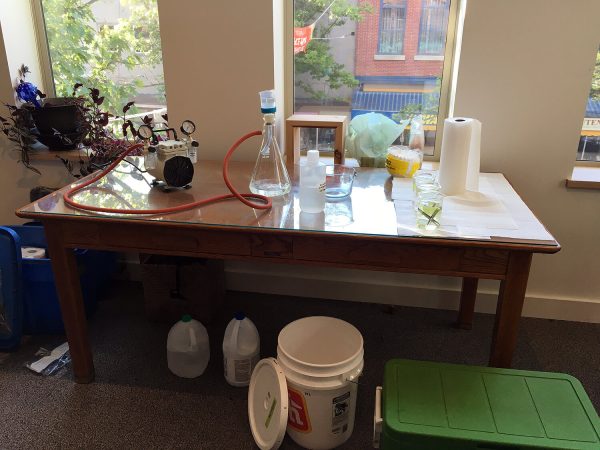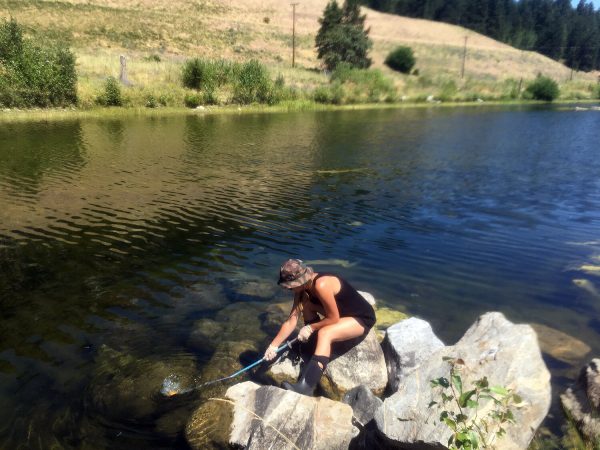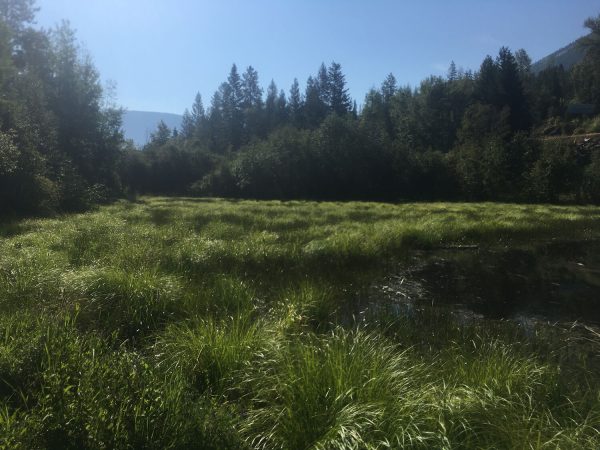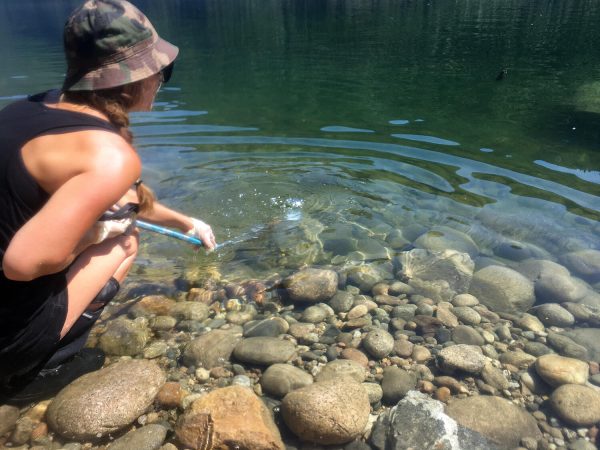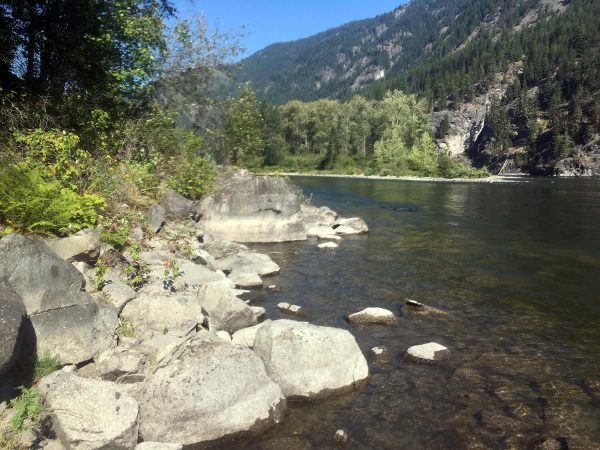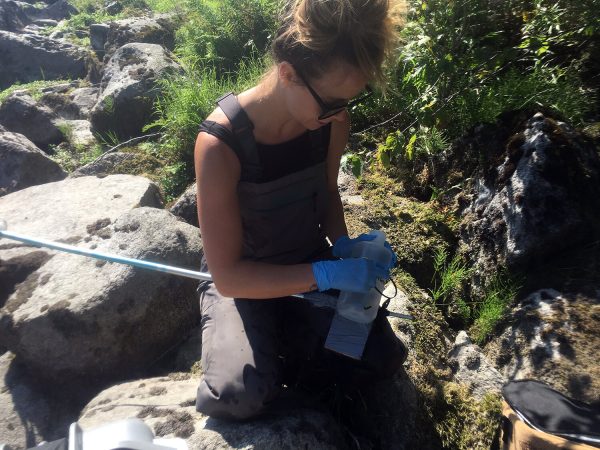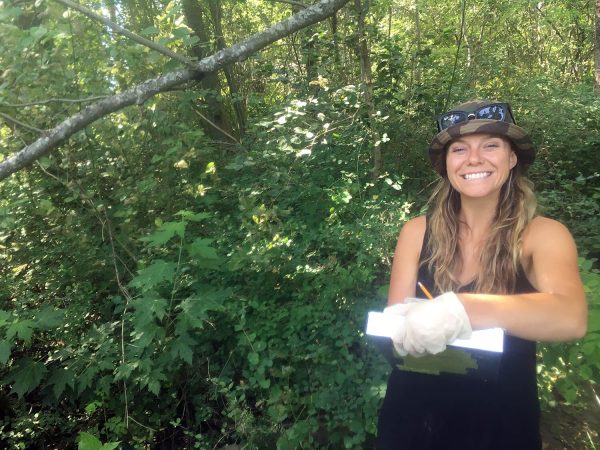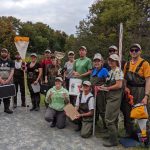Embarking on eDNA Research for the FlowH20 pilot
Submitted by Kyle Prince, Living Lakes Canada Program Coordinator
In late July, Living Lakes Canada (LLC) staff Raegan Mallinson and Kyle Prince collected water samples at select sites to capture Environmental DNA (eDNA) for a number of target species for an eDNA research project led by the University of Victoria.
In partnership with the FlowH2O pilot project, LLC was tasked with undertaking the field component of the eDNA research project. The goals are to develop a greater understanding of eDNA applications, detection rates, applicability, while enhancing local conservation efforts by providing valuable target species spatial information. All animals slough off DNA through skin, mucus, feces, etc. into their immediate environment; these eDNA fragments can be captured by properly filtering a water sample which is then analyzed in a lab.
The LLC crew travelled to three select areas in the pilot project area, near Nelson, B.C. and collected water samples in wetland, lake, river, and creek settings. Other general habitat and water quality data were also collected to increase site knowledge and understanding. Samples were filtered and preserved within 24 hours to prevent eDNA degradation before being shipped to the University of Victoria for analysis and reporting. Sample analysis will reveal detection or non-detection of the target species, which will greatly increase data available at the important conservation sites. In some instances, these results will be used alongside existing conventional data.
“We’re very excited about working with LLC to introduce new environmental DNA methods to the Nelson area. From just a scoop of water, we can detect target species’ DNA with high sensitivity and specificity. This is easier on the field crew taking samples and gentler on target species’ habitat,” said Dr. Caren Helbing, Ph.D., Professor with the Department of Biochemistry & Microbiology and Centre for Biomedical Research at University of Victoria.
Another round of sampling will occur this fall to develop a greater understanding of the sites, and the target species that potentially inhabit them.


